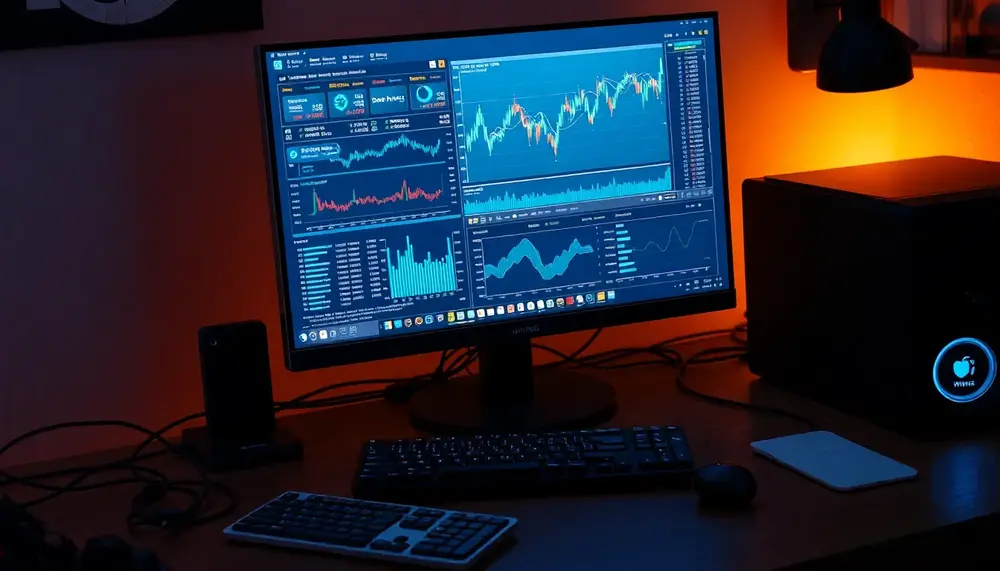Hash
Hash
Understanding the term 'Hash' in Bitcoin Mining
The world of Bitcoin mining can seem complex with its unique terms and concepts. One such term you will often encounter is the 'Hash'. But what exactly does that mean?
Basics: What is a 'Hash'?
At its simplest, a hash is a kind of digital fingerprint. When we talk about Bitcoin mining, a hash is a set of unique alphanumeric characters. This set is generated by a hash function from certain input data.
The Magic of Hash Functions
In Bitcoin Mining, a hash function plays a crucial role. It takes the information from a block of transactions as input. Then, it churns out a fixed-size string of bytes, usually as a hexadecimal number. Despite being a complex process, it is amazingly swift.
Uniqueness of a 'Hash'
A fascinating aspect of hash functions is that they produce a unique hash for every unique input. This means that even extremely small changes in the input data will result in a significantly different hash.
Significance of 'Hash' in Bitcoin Mining
In the context of Bitcoin mining, hashes are of extreme importance. Miners are competing with each other to solve a mathematical puzzle, which is basically finding a hash that meets certain conditions. The first miner to find the correct hash gets to add the next block to the blockchain and receive the bitcoin reward. This process is referred to as 'proof of work'.
Connection between 'Hash' and Block Security
Apart from puzzle-solving, the hash also ensures the security of Bitcoin transactions. Since each block is given a unique hash code, it’s near impossible to alter transactions once they are added to the blockchain. If such a change was attempted, the hash would also have to be altered, alerting the network to the fraudulent activity.
Final Thoughts on 'Hash'
As a key concept in Bitcoin mining, understanding a hash is essential for anyone venturing into this field. Equipped with this knowledge, you are now better prepared to delve into the world of bitcoin mining!
Blog Posts with the term: Hash

This guide simplifies Monero solo mining with XMRig, covering setup and optimization to mine efficiently. It explains the benefits of using XMRig, necessary hardware requirements, and how to set up a Monero wallet for secure fund management....

Monero mining with CPUs is accessible and cost-effective due to the RandomX algorithm, which optimizes CPU performance over GPUs; top processors include AMD Ryzen 9 3950X and Intel Core i9-10900K. Benchmarking involves measuring hash rates and power consumption using software...

The article discusses the initial investment required for crypto mining in India, emphasizing costs related to hardware, setup, and software. It also highlights key technical specifications needed for mining rigs, such as GPUs and cooling systems, while stressing the importance...

Cloud mining allows individuals to lease processing power from remote data centers for cryptocurrency mining, offering convenience and lower upfront costs but potentially reduced earnings and risks of scams. Hardware mining involves owning equipment with greater control and profit potential...

This guide provides a comprehensive overview of setting up an Ethereum mining rig, covering essential components like GPUs and motherboards, as well as key concepts such as Proof of Work (PoW) and hashrate. By the end, readers will understand how...

A mining pool is a collaborative group of miners who combine their computational resources to increase the likelihood of successfully mining cryptocurrency blocks and sharing rewards, essential due to the high power demands that make solo mining nearly impossible. Setting...

Mining XRP directly is not possible; instead, miners can earn XRP by mining other cryptocurrencies and exchanging them for XRP. This guide covers setting up a secure wallet, choosing the right software like Unmineable or NiceHash, and configuring your mining...

Real USDT mining apps allow users to mine Tether (USDT) directly from their smartphones or computers, offering a simplified and accessible entry point for both beginners and seasoned miners. These apps feature user-friendly interfaces, automated mining options, real-time earnings tracking,...

Bitcoin mining apps can transform your device into a mini mining rig, but with the market flooded by both genuine and dubious options, it's crucial to verify platforms like Google Play for reliability through download numbers, ratings, user reviews, and...

Monero mining on AMD Ryzen CPUs is popular due to their high performance and efficiency; this article provides a guide for optimizing these processors, covering hardware selection, BIOS settings, and software configuration to maximize mining profitability. Key considerations include core...

This article explores the connection between Bitcoin mining and renewable energy, specifically focusing on solar, wind, and hydropower sources. It highlights the shift towards renewable energy in Bitcoin mining driven by environmental concerns, economic benefits, and advancements in technology. The...

Setting up a mining pool involves configuring the correct URL and port settings to ensure efficient and secure operations, with considerations for cryptocurrency type, geographical location of pools, reputation, fees, supported coins, and security protocols. Understanding commonly used ports like...

Crypto mining on a Mac is possible but requires careful planning due to hardware limitations and software compatibility issues. To optimize performance, choose the right mining software like CGMiner or MacMiner, manage background processes, update your system regularly, and consider...

When cashing out crypto from mining, choose your payout coin wisely by considering transaction fees, market volatility, liquidity, and future potential; also understand minimum withdrawal requirements to ensure efficient transactions....

